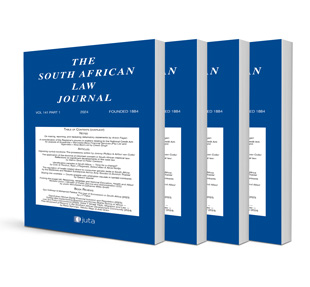Beyond punishment: Context and correctional supervision as a restorative sentence — An analysis of S v Mphahlele

Note
Beyond punishment: Context and correctional supervision as a restorative sentence — An analysis of S v Mphahlele
Author: Amanda Spies
ISSN: 1996-2177
Affiliations: Associate Professor, Department of Public Law, Nelson Mandela University
Source: South African Law Journal, Volume 142 Issue 3, p. 439-454
https://doi.org/10.47348/SALJ/v142/i3a1
Abstract
This note examines correctional supervision as a sentencing option for serious crimes by analysing the Mphahlele judgment, and explores whether correctional supervision incorporates (or should incorporate) elements of restorative justice. It critically assesses whether such an approach risks distorting traditional restorative justice principles and underscores the need to engage with justice as a transformative process — one that shifts the focus from individualised notions of crime and punishment to the structural inequalities that underpin criminal behaviour. Additionally, the note adopts a feminist perspective to interrogate the role of gender in sentencing, considering in particular whether identifying the accused as a mother and primary caregiver in Mphahlele reinforces harmful stereotypes.